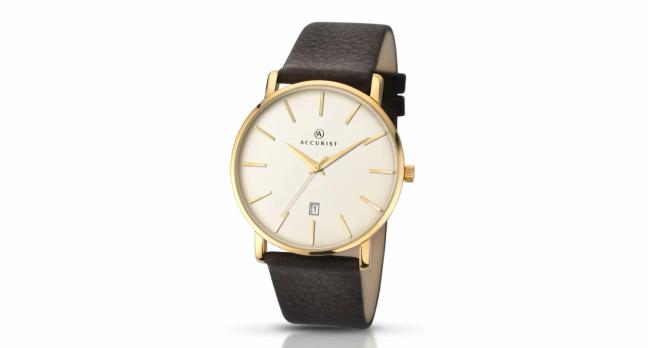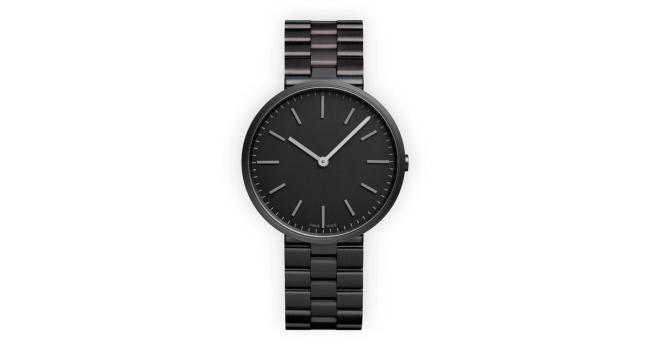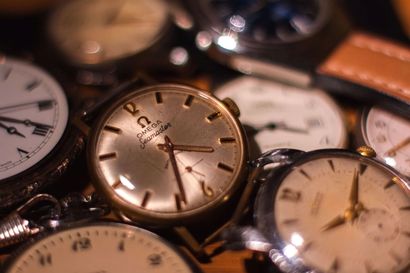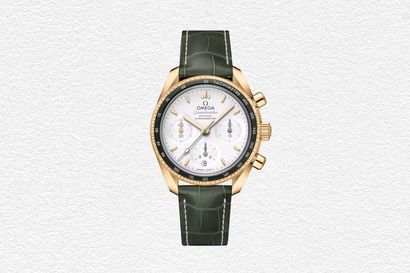The watch industry has reached a fork in the road.
Just last month, the second iteration of Apple’s smartwatch, the Series 2, was revealed to the world. With its retina display, digital crown and heart rate sensor, the watch is barely a watch at all – a case packed with tricks and technology far beyond the basic definition of a timepiece.
On the other hand – or should that be wrist? – companies such as Mondaine, Swatch and Accurist are increasingly moving towards minimalist watches. Paring their timepieces down in terms of both style and function, these brands are shunning subdials, avoiding showy straps and forgoing fancy cases.

But why has 2016 seen such an uptake in horologists dialling back their dials? Why are watches going back to basics?
As with any fashion, styles come in cycles. And as baggy trousers give way to slim fit, and buzzcuts follow trends of long locks, the movement back to basic watches may be a reaction against the how saturated with gimmicks the timepiece market had become.
Double and even triple crown watches were being launched, watches with tens of time zones, altimeters, slide rule bezels and day, month and year windows. Faces were getting too busy, cases too big and watches too niche. You needed a watch for driving, a watch for diving and a watch for going to dinner. But minimalist watches are basic, their faces and functions don’t lend them to one particular purpose – and thus they are the most versatile of accessories.
It is this versatility upon which many modern watchmakers sell their plain-faced and pared back timepieces. Larson and Jennings’ 38mm Lugano has a plain white dial, rose gold case and hands and brown leather strap. It is inoffensive, does its job, and would look as at home on the wrist of an adventurer as it would a banker.

Accurist’s 7125 does the same – but with even less detail on the face. Eschewing the 3, 6, 9 and 12 numerals, this gold-plated timeless timepiece opts for simple gold markers – and thus presents no preconceptions about how it should be used.
Of course, while versatility is the drive behind some watchmaker’s return to minimalist design, others simply didn’t buy into a busier watch in the first place.

Swiss watchmaker Mondaine has produced its Official Swiss Railways Watch since 1986, when they based their first on the blueprints of engineer and designer Hans Hilfiker’s original 1944 Railway Clock. And, while the company hasn’t changed the design in over three decades, sales of the watch have soared in recent years – showing a want for the more traditional, subdued timepieces of the past.
The no fuss watch is also effortlessly chic. Streamlined and sleek, the lack of text and curtailment of colours afford minimalist watches a level of fashion that busier timepieces couldn’t hope to replicate.
Uniform Wares created the M37 in black to epitomise this simplicity. With a black steel bracelet and black dial, the 37mm black case is also lug-less, paring down the watch not only in colour and decals, but also in shape.

But, as one end of the watch market becomes increasingly complicated, adding more functions and complex technologies, will the other end reach similar extremes? How basic and minimalist can wristwatches go? And, more importantly, will there be a point where the pared-down look stops being chic and starts being just plain naff?

Become a Gentleman’s Journal Member?
Like the Gentleman’s Journal? Why not join the Clubhouse, a special kind of private club where members receive offers and experiences from hand-picked, premium brands. You will also receive invites to exclusive events, the quarterly print magazine delivered directly to your door and your own membership card.


